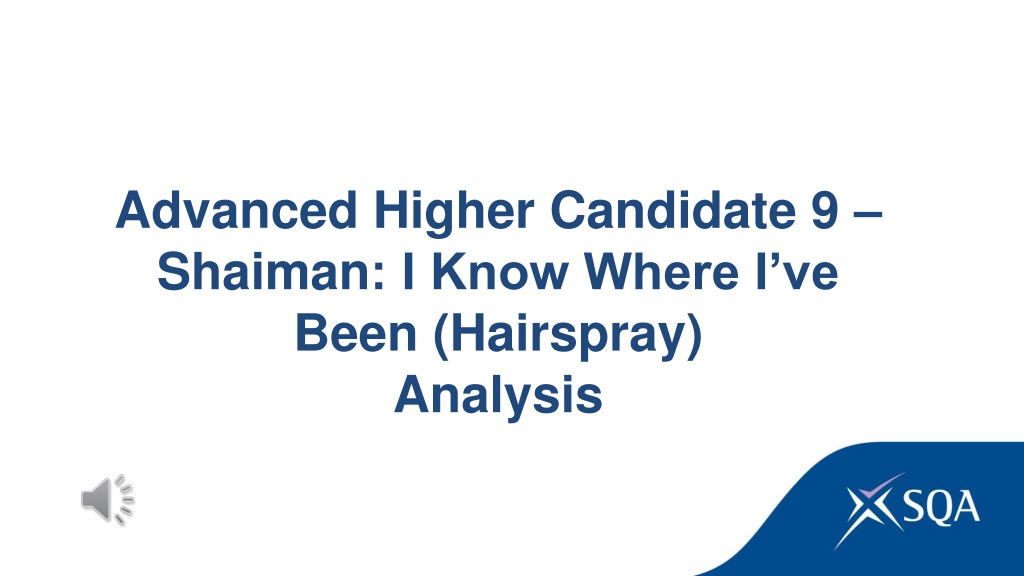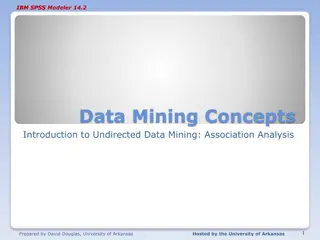Analysis of "I Know Where I've Been" from Hairspray
The analysis delves into key musical features of the song "I Know Where I've Been" from Hairspray, focusing on elements such as style, melody, harmony, rhythm, tempo, texture, structure/form, timbre, and dynamics. It discusses the song's chord progressions, vocal techniques, use of unison, crescendo effects, and effective backing vocals. The detailed breakdown provides insights into how these elements contribute to the emotional depth and impact of the music.
Download Presentation

Please find below an Image/Link to download the presentation.
The content on the website is provided AS IS for your information and personal use only. It may not be sold, licensed, or shared on other websites without obtaining consent from the author.If you encounter any issues during the download, it is possible that the publisher has removed the file from their server.
You are allowed to download the files provided on this website for personal or commercial use, subject to the condition that they are used lawfully. All files are the property of their respective owners.
The content on the website is provided AS IS for your information and personal use only. It may not be sold, licensed, or shared on other websites without obtaining consent from the author.
E N D
Presentation Transcript
Advanced Higher Candidate 9 Shaiman: I Know Where I ve Been (Hairspray) Analysis
Analysis requirement You must identify key features within your chosen piece by referring to at least five of the elements below: style melody harmony rhythm and tempo texture structure and/or form timbre and dynamics
Bars: 1-4 5-12 13-21* 22-29 30-37 38-45 46-53 54-60 Intro Verse 1 Verse 2 Middle 8 Verse 3 Middle 8 Verse 4 A major Coda A major G major G major modulating to E minor before descending to D7sus4 and back to G in bar 12. G major. Same chord pattern as v.1, but stays in E minor after modulation E minor, modulating back to G major during bar 34. G major with same chord sequence as other verses until bar 41, C/D chord is used to lead back to G major instead of E minor Am7 chord goes straight to E minor for partial repeat of middle 8 chord sequence. Bar 50 moves from B chord to D and then up a semitone to E (chord V in new key) to modulate to A major.
Worth noting from the table above is that the song follows a regular 8 bar structure throughout, but at the end of verse 2 an extra bar* is added. This allows for a short saxophone and rhythm guitar interjection and, perhaps also by delaying the start of the middle 8 gives it more emphasis.
The music crescendos as they sing about the struggle to overcome. Unison is used in the backing vocals ( I know it, I know it ) to emphasise their determination to win and also by all voices and instruments in the 3rdlast bar .
The backing vocals are used very effectively. Often in gospel songs they sing most of the time but here they start by softly humming in unison in the first Middle 8. Before that, in bar 13 a lone soprano, when Motormouth sings There s a cry , provides a high, drawn-out pedal, imitating a cry.
In verse 3 as well as humming in harmony, the backing vocals echo the soloist s word dream , before singing more loudly the melody with words in three-part harmony in the second Middle 8. This subtle use of vocals builds up the texture and tension.
The drum kit is sensitively used with a closed hi-hat tap on beats 2 and 4, highlighting the rhythm guitar part. The saxophone also provides interjections at the ends of phrases, in a call and response fashion as befits the gospel style. This economical use of instruments allows the voice to come through even though the singer is singing softly.
In one of the biggest climaxes of the song, the music modulates from G major to Ab major. While this happens, underneath the word take the drum kit plays a fill using all twelve quavers of the bar, followed by the piano (R.H) playing the same rhythm in octaves, accenting the modulation. Time code ref: 3.05-3.12
I Know Where Ive Been is a song from the 2007 film Hairspray. Hairspray is set in Baltimore in 1962, six years before the Civil Rights Movement was passed in 1968. This song is sung by Motormouth Maybelle during a peaceful protest march and is about the struggles of her and her children s past and their hopes for the future.
Candidate 9 Shaiman 5 marks 5 marks The candidate demonstrates a perceptive understanding of the chosen piece by giving a detailed identification of key features of the music, backed up with detailed reference to the audio and, where appropriate, a score or guide to the music. 4 marks The candidate demonstrates a secure understanding of the chosen piece by giving a fairly detailed identification of key features of the music, backed up with fairly detailed reference to the audio and, where appropriate, a score or guide to the music. 3 marks The candidate demonstrates a satisfactory understanding of the chosen piece by giving a satisfactory identification of key features of the music, backed up with satisfactory reference to the audio and, where appropriate, a score or guide to the music.
Further example of analyses Queen: Killer Queen 5 marks (AH Music Assignment candidate evidence, August 2019) Mozart: Piano Sonata No 16 in C major 4 marks (AH Music Assignment candidate evidence, August 2019) Debussy: Pr lude l apr s-midi d un faune 1 mark (AH Music Assignment candidate evidence, August 2019)






























